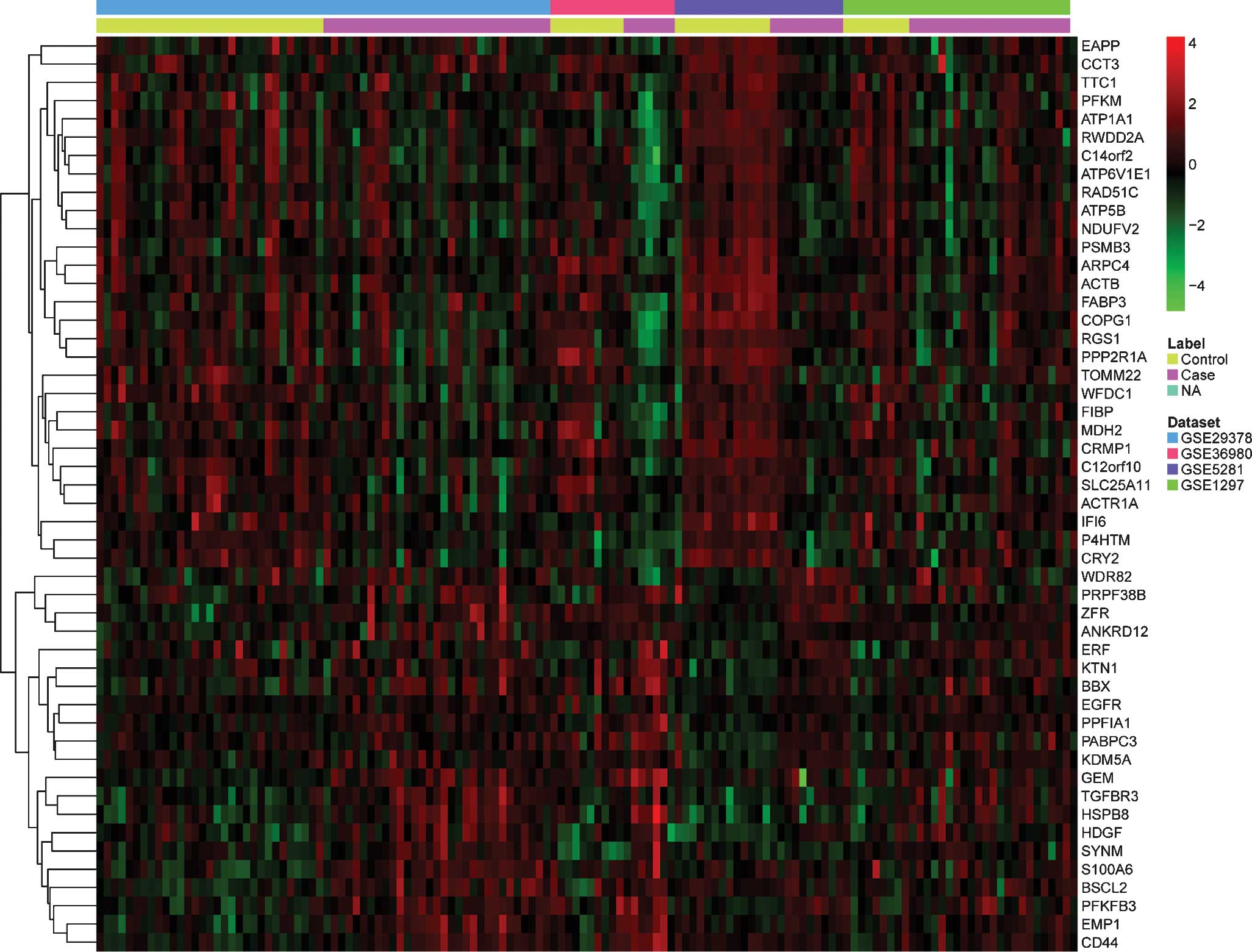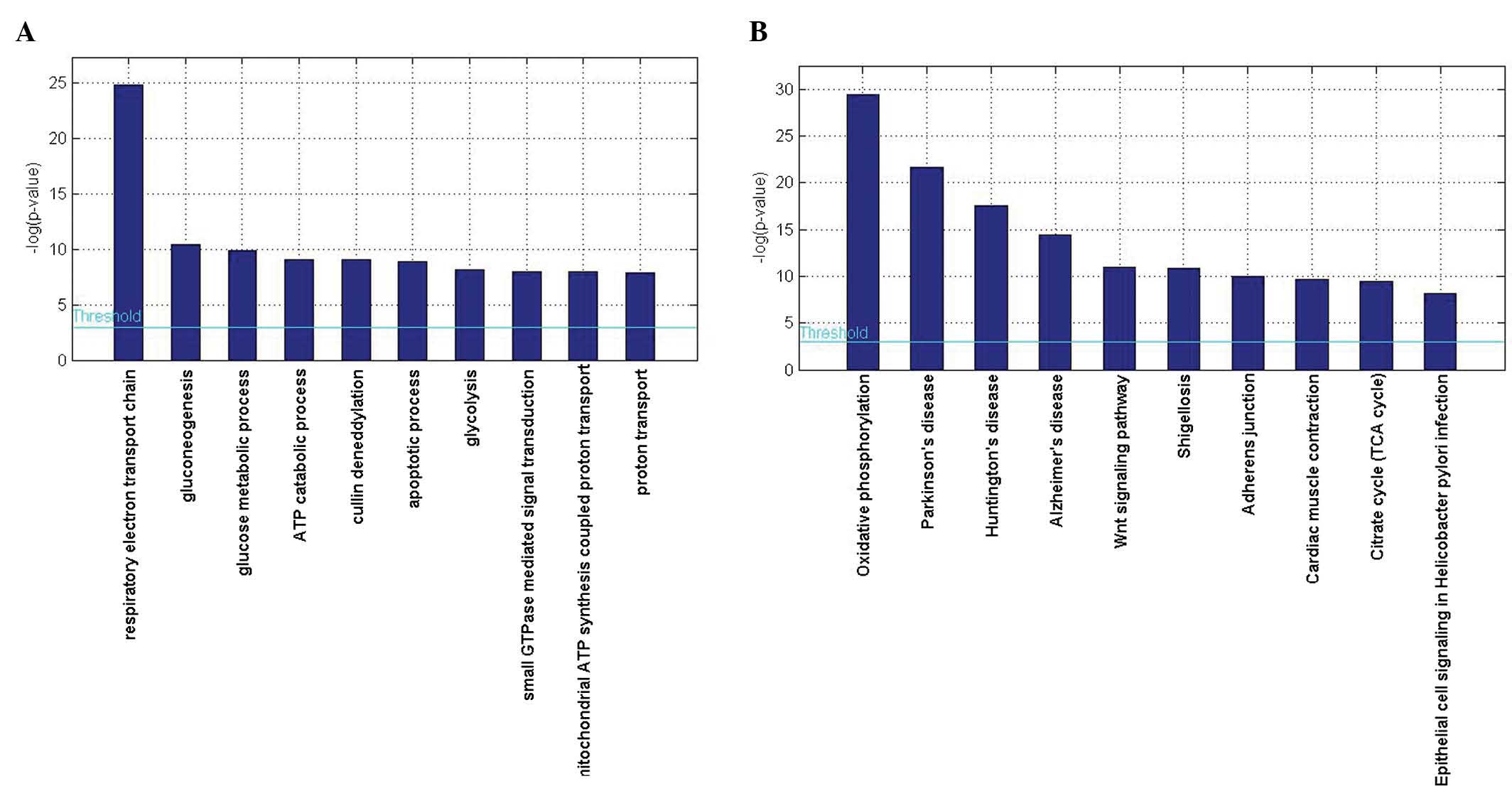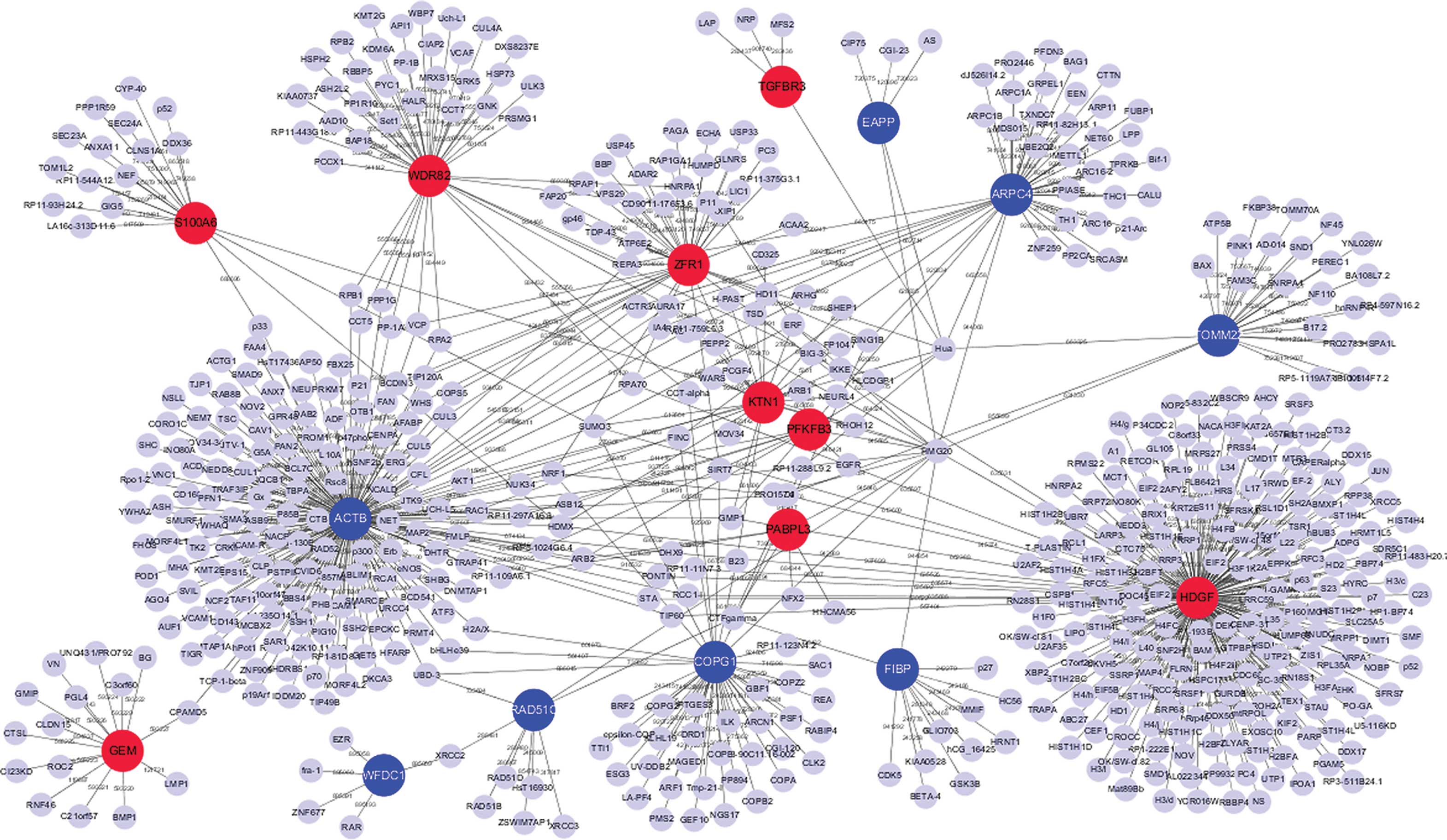|
1
|
Hommet C, Mondon K, Constans T, Beaufils
E, Desmidt T, Camus V and Cottier JP: Review of cerebral
microangiopathy and Alzheimer's disease: Relation between white
matter hyperintensities and microbleeds. Dement Geriatr Cogn
Disord. 32:367–378. 2011. View Article : Google Scholar
|
|
2
|
Hyman BT, Van Hoesen GW, Damasio AR and
Barnes CL: Alzheimer's disease: Cell-specific pathology isolates
the hippocampal formation. Science. 225:1168–1170. 1984. View Article : Google Scholar : PubMed/NCBI
|
|
3
|
Kordower JH, Chu Y, Stebbins GT, DeKosky
ST, Cochran EJ, Bennett D and Mufson EJ: Loss and atrophy of layer
II entorhinal cortex neurons in elderly people with mild cognitive
impairment. Ann Neurol. 49:202–213. 2001. View Article : Google Scholar : PubMed/NCBI
|
|
4
|
Scheff SW, Price DA, Schmitt FA, DeKosky
ST and Mufson EJ: Synaptic alterations in CA1 in mild Alzheimer
disease and mild cognitive impairment. Neurology. 68:1501–1508.
2007. View Article : Google Scholar : PubMed/NCBI
|
|
5
|
Kerchner GA, Hess CP, Hammond-Rosenbluth
KE, Xu D, Rabinovici GD, Kelley DA, Vigneron DB, Nelson SJ and
Miller BL: Hippocampal CA1 apical neuropil atrophy in mild
Alzheimer disease visualized with 7-T MRI. Neurology. 75:1381–1387.
2010. View Article : Google Scholar : PubMed/NCBI
|
|
6
|
O'Brien RJ and Wong PC: Amyloid precursor
protein processing and Alzheimer's disease. Annu Rev Neurosci.
34:185–204. 2011. View Article : Google Scholar : PubMed/NCBI
|
|
7
|
Noble W, Hanger DP, Miller CC and
Lovestone S: The importance of tau phosphorylation for
neurodegenerative diseases. Front Neurol. 4:832013. View Article : Google Scholar : PubMed/NCBI
|
|
8
|
Martin L, Latypova X, Wilson CM,
Magnaudeix A, Perrin ML, Yardin C and Terro F: Tau protein kinases:
Involvement in Alzheimer's disease. Ageing Res Rev. 12:289–309.
2013. View Article : Google Scholar
|
|
9
|
Liu CC, Kanekiyo T, Xu H and Bu G:
Apolipoprotein E and Alzheimer disease: Risk, mechanisms and
therapy. Nat Rev Neurol. 9:106–118. 2013. View Article : Google Scholar : PubMed/NCBI
|
|
10
|
Auld DS, Kornecook TJ, Bastianetto S and
Quirion R: Alzheimer's disease and the basal forebrain cholinergic
system: Relations to beta-amyloid peptides, cognition and treatment
strategies. Prog Neurobiol. 68:209–245. 2002. View Article : Google Scholar : PubMed/NCBI
|
|
11
|
Beckmann L, Fischer C, Deck KG, Nolte IM,
te Meerman G and Chang-Claude J: Exploring haplotype sharing
methods in general and isolated populations to detect gene(s) of a
complex genetic trait. Genet Epidemiol. 21(Suppl 1): S554–S559.
2001.
|
|
12
|
Blalock EM, Geddes JW, Chen KC, Porter NM,
Markesbery WR and Landfield PW: Incipient Alzheimer's disease:
Microarray correlation analyses reveal major transcriptional and
tumor suppressor responses. Proc Natl Acad Sci USA. 101:2173–2178.
2004. View Article : Google Scholar : PubMed/NCBI
|
|
13
|
Colangelo V, Schurr J, Ball MJ, Pelaez RP,
Bazan NG and Lukiw WJ: Gene expression profiling of 12633 genes in
Alzheimer hippocampal CA1: Transcription and neurotrophic factor
down-regulation and up-regulation of apoptotic and pro-inflammatory
signaling. J Neurosci Res. 70:462–473. 2002. View Article : Google Scholar : PubMed/NCBI
|
|
14
|
Mufson EJ, Counts SE and Ginsberg SD: Gene
expression profiles of cholinergic nucleus basalis neurons in
Alzheimer's disease. Neurochem Res. 27:1035–1048. 2002. View Article : Google Scholar : PubMed/NCBI
|
|
15
|
Siddiqui AS, Delaney AD, Schnerch A,
Griffith OL, Jones SJ and Marra MA: Sequence biases in large scale
gene expression profiling data. Nucleic Acids Res. 34:e832006.
View Article : Google Scholar : PubMed/NCBI
|
|
16
|
Barrett T, Wilhite SE, Ledoux P,
Evangelista C, Kim IF, Tomashevsky M, Marshall KA, Phillippy KH,
Sherman PM, Holko M, et al: NCBI GEO: Archive for functional
genomics data sets-update. Nucleic Acids Res. 41:D991–D995. 2013.
View Article : Google Scholar
|
|
17
|
Altermann E and Klaenhammer TR:
PathwayVoyager: Pathway mapping using the Kyoto Encyclopedia of
Genes and Genomes (KEGG) database. BMC Genomics. 6:602005.
View Article : Google Scholar : PubMed/NCBI
|
|
18
|
Tabas-Madrid D, Nogales-Cadenas R and
Pascual-Montano A: GeneCodis3: A non-redundant and modular
enrichment analysis tool for functional genomics. Nucleic Acids
Res. 40:W478–W483. 2012. View Article : Google Scholar : PubMed/NCBI
|
|
19
|
Giot L, Bader JS, Brouwer C, Chaudhuri A,
Kuang B, Li Y, Hao YL, Ooi CE, Godwin B, Vitols E, et al: A protein
interaction map of Drosophila melanogaster. Science. 302:1727–1736.
2003. View Article : Google Scholar : PubMed/NCBI
|
|
20
|
Schaefer MH, Lopes TJ, Mah N, Shoemaker
JE, Matsuoka Y, Fontaine JF, Louis-Jeune C, Eisfeld AJ, Neumann G,
Perez-Iratxeta C, et al: Adding protein context to the human
protein-protein interaction network to reveal meaningful
interactions. PLoS Comput Biol. 9:e10028602013. View Article : Google Scholar : PubMed/NCBI
|
|
21
|
Shannon P, Markiel A, Ozier O, Baliga NS,
Wang JT, Ramage D, Amin N, Schwikowski B and Ideker T: Cytoscape: A
software environment for integrated models of biomolecular
interaction networks. Genome Res. 13:2498–2504. 2003. View Article : Google Scholar : PubMed/NCBI
|
|
22
|
Miller JA, Woltjer RL, Goodenbour JM,
Horvath S and Geschwind DH: Genes and pathways underlying regional
and cell type changes in Alzheimer's disease. Genome Med. 5:482013.
View Article : Google Scholar : PubMed/NCBI
|
|
23
|
Hokama M, Oka S, Leon J, Ninomiya T, Honda
H, Sasaki K, Iwaki T, Ohara T, Sasaki T, LaFerla FM, et al: Altered
expression of diabetes-related genes in Alzheimer's disease brains:
The Hisayama study. Cereb Cortex. 24:2476–2488. 2014. View Article : Google Scholar :
|
|
24
|
Liang WS, Dunckley T, Beach TG, Grover A,
Mastroeni D, Walker DG, Caselli RJ, Kukull WA, McKeel D, Morris JC,
et al: Gene expression profiles in anatomically and functionally
distinct regions of the normal aged human brain. Physiol Genomics.
28:311–322. 2007. View Article : Google Scholar
|
|
25
|
Meagher MJ, Schumacher JM, Lee K,
Holdcraft RW, Edelhoff S, Disteche C and Braun RE: Identification
of ZFR, an ancient and highly conserved murine
chromosome-associated zinc finger protein. Gene. 228:197–211. 1999.
View Article : Google Scholar : PubMed/NCBI
|
|
26
|
Kleines M, Gärtner A, Ritter K and Schaade
L: Cloning and expression of the human single copy homologue of the
mouse zinc finger protein zfr. Gene. 275:157–162. 2001. View Article : Google Scholar : PubMed/NCBI
|
|
27
|
Novarino G, Fenstermaker AG, Zaki MS,
Hofree M, Silhavy JL, Heiberg AD, Abdellateef M, Rosti B, Scott E,
Mansour L, et al: Exome sequencing links corticospinal motor neuron
disease to common neurodegenerative disorders. Science.
343:506–511. 2014. View Article : Google Scholar : PubMed/NCBI
|
|
28
|
Zimmer DB, Chaplin J, Baldwin A and Rast
M: S100-mediated signal transduction in the nervous system and
neurological diseases. Cell Mol Biol (Noisy-le-grand). 51:201–214.
2005.
|
|
29
|
Boom A, Pochet R, Authelet M, Pradier L,
Borghgraef P, Van Leuven F, Heizmann CW and Brion JP: Astrocytic
calcium/zinc binding protein S100A6 over expression in Alzheimer's
disease and in PS1/APP transgenic mice models. Biochim Biophys
Acta. 1742:161–168. 2004. View Article : Google Scholar : PubMed/NCBI
|
|
30
|
Bellucci C, Lilli C, Baroni T, Parnetti L,
Sorbi S, Emiliani C, Lumare E, Calabresi P, Balloni S and Bodo M:
Differences in extracellular matrix production and basic fibroblast
growth factor response in skin fibroblasts from sporadic and
familial Alzheimer's disease. Mol Med. 13:542–550. 2007. View Article : Google Scholar : PubMed/NCBI
|
|
31
|
Leduc V, Legault V, Dea D and Poirier J:
Normalization of gene expression using SYBR green qPCR: A case for
paraoxonase 1 and 2 in Alzheimer's disease brains. J Neurosci
Methods. 200:14–19. 2011. View Article : Google Scholar : PubMed/NCBI
|
|
32
|
Bamburg JR and Bloom GS: Cytoskeletal
pathologies of Alzheimer disease. Cell Motil Cytoskeleton.
66:635–649. 2009. View
Article : Google Scholar : PubMed/NCBI
|
|
33
|
Liang WS, Reiman EM, Valla J, Dunckley T,
Beach TG, Grover A, Niedzielko TL, Schneider LE, Mastroeni D,
Caselli R, et al: Alzheimer's disease is associated with reduced
expression of energy metabolism genes in posterior cingulate
neurons. Proc Natl Acad Sci USA. 105:4441–4446. 2008. View Article : Google Scholar : PubMed/NCBI
|












